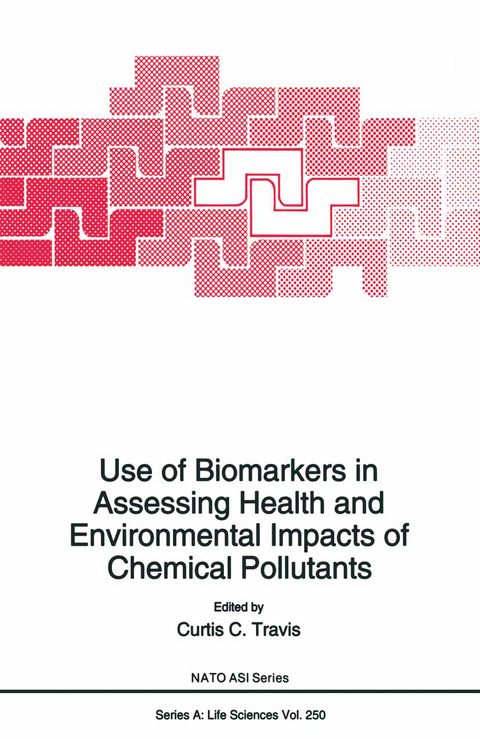
Use of Biomarkers in Assessing Health and Environmental Impacts of Chemical Pollutants
Springer-Verlag New York Inc.
978-1-4899-2054-6 (ISBN)
Biological markers (biomarkers) are useful tools for understanding the nature and extent of human exposure and risk from environmental toxicants. Biomarkers are classified into three basic categories: exposure, effect, or susceptibility. A marker of exposure is the product of the interaction between a target cell or molecule and a foreign substance (NAS, 1989). These markers can be used to determine the biologically effective dose necessary to elicit a particular physiological change in an organism. A marker of effect is a biochemical or physiological change in an organism that can predict the onset of adverse health effects resulting from a given exposure. Lastly, markers of susceptibility act as indicators of an inherent or acquired tendency of an organism to experience an adverse health effect (NAS, 1989). These markers are already used to detect a variety of diseases and show great promise for developing a better understanding of the mechanicisms of disease. Additionally, biomarkers can be used to establish a more rational basis for quantitative risk extrapolation between species, as weIl as to obtain more precise estimates of the time of critical exposure. These markers can also prove helpful in identifying potentially damaging exposures before the onset of adverse health effects. Biomarkers serve as a valuable exposure assessment tool because they take into account exposure from all routes and integrate exposure from all sources. They have the potential to yield better risk estimates than current monitoring and modeling protocols. In lune 1992, Dr. Travis and Dr.
Molecular Dosimetry.- to Molecular Dosimetry.- The 4-Aminobiphenyl Hemoglobin Adduct as a Biomarker of Effect.- Current Research on Hemoglobin Adducts and Cancer Risks: An Overview.- Use of Biomarkers in Quantitative Risk Assessment.- Dose-Response Relationships for Mutagenic and Carcinogenic Action of Genotoxic Agents.- Measurement of Mutation Spectra as a Molecular Dosimeter.- Biomarkers as Molecular Dosimeters of Genotoxic Substances.- Biomarkers of Environmental Exposure.- Public Health Assessment as a Tool in Identifying Human Exposure to Environmental Pollutants.- The Suitability of the Mosses Sphagna as Quantitative Indicators of Heavy Metal Levels in Urban Atmospheres.- Epidemiologic Approach for the Assessment of Acceptable Exposure Levels to Cadmium and Manganese.- Biological Monitoring of Exposure to Organic Compounds.- Biomarkers of Toxicity.- Stress Proteins as Biomarkers of Toxicity.- Significance of Serum Ferritin Concentrations in Lung Cancer and Its Relation with Cellular Immunity.- Biological Markers in Reproductive Toxicology.- Outcome Based Biomarkers of Female Reproduction.- Factors Determining the Exposure of the Embryo and Fetus: Species Variation of Teratogenesis and Placental Transfer of Xenobiotics.- Assessing Reproductive Risks with Biological Markers.- Biomarkers of Neurotoxicity.- Behavioral Biomarkers to Identify Neurotoxic Effects.- Mechanisms of and Biomarkers for Acute and Delayed Neuropathic Effects of Organophosphorus Esters.- Mechanisms and Biomarkers of Solvent-Induced Behavioral and Neuroendocrine Effects.- Biomarkers of Immunotoxicology.- Serum Biomarkers in the On-Site Evaluation of Suspected Cancer Risk in Humans Residing Near Hazardous Waste Sites.- The Use of Biomarkers in the Evaluation of Exposure and Health at a Hazardous Waste Site.- Ecological Biomarkers.- State of the Art—Ecological Biomarkers.- Detection of Genotoxicity of Water and Air Pollutants Using Tradescantia (Spiderwort) Plants.- Animals and Plants as Bioindicators of Radionuclide Contamination in Forest Ecosystems.- Tumor Markers.- Tumor Markers in Effusions: A Comparative Study of Tumor Marker Levels in Sera and Effusions.- Evaluation of Ceruloplasmin Level in Women with Breast Disease: Preliminary Results.- Contributors.
| Reihe/Serie | Nato Science Series: A ; 250 |
|---|---|
| Zusatzinfo | XII, 286 p. |
| Verlagsort | New York |
| Sprache | englisch |
| Maße | 155 x 235 mm |
| Themenwelt | Medizin / Pharmazie ► Medizinische Fachgebiete |
| Studium ► 2. Studienabschnitt (Klinik) ► Humangenetik | |
| Naturwissenschaften ► Biologie ► Botanik | |
| Naturwissenschaften ► Biologie ► Ökologie / Naturschutz | |
| Naturwissenschaften ► Biologie ► Zoologie | |
| Technik ► Umwelttechnik / Biotechnologie | |
| ISBN-10 | 1-4899-2054-4 / 1489920544 |
| ISBN-13 | 978-1-4899-2054-6 / 9781489920546 |
| Zustand | Neuware |
| Informationen gemäß Produktsicherheitsverordnung (GPSR) | |
| Haben Sie eine Frage zum Produkt? |
aus dem Bereich


